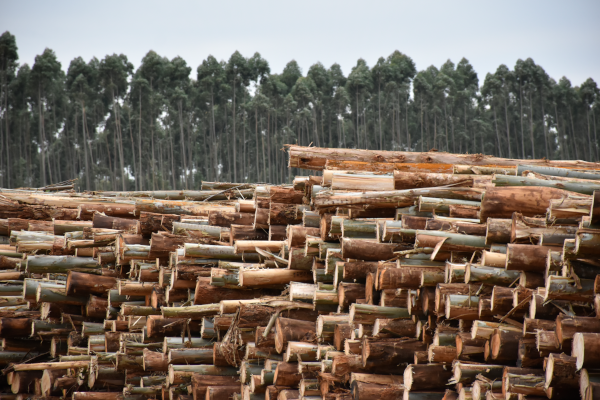Published at the end of September, the study Production of Vegetal Extraction and Silviculture (PEVS) 2021, by the Brazilian Institute of Geography and Statistics (IBGE) indicated growth in silvicultural production in Brazil, from 2020 to 2021.
The value of forestry production (which includes native and planted trees) reached a record of R$ 30.1 billion, with an increase of 27.1% and production in 4,884 municipalities. The value of silviculture production, which takes into account only planted forests, continues to exceed that of plant extraction, which has occurred since the year 2000. 2019) with an increase of 26.1%, reaching R$ 23.8 billion in 2021.
“Forest products appreciated a lot in 2021. This increase is related to the rise in the dollar and also to the return of industrial production. The most expressive increase occurred in the value of forest production (27.1%). Of this amount, a large part (79.3%) comes from silviculture, or planted forests, while vegetal extraction accounts for 20.7%”, analyzes Carlos Alfredo Guedes, manager of Agriculture at IBGE.
He explains that, every year, the participation of silviculture in the sector’s production value grows, and that of plant extractivism drops. This does not mean that plant extraction is decreasing, but that the value of forestry products is increasing.

Studies by Embrapa Florestas show that the loss of carbon in soils converted to forest plantations is only 5% and not 33%, as previously believed. The update of this data is the result of the evolution of Brazilian science, which started to use the soil carbon change index (BAI) based on information from national surveys. In this way, the index more faithfully represents the specificities of the country and shows greater potential for mitigating greenhouse gases (GHGs) through forest plantations.
According to the research institution, the work was based on studies carried out in Brazil and published between 2002 and 2019, in areas converted to planted forests of eucalyptus, pine and black wattle. The data involved information obtained in nine states: RS, SC, PR, SP, ES, MG, BA, PA and MS, covering more than 8.6 million hectares of forest plantations. “In the case of this index, the calculation value was not consistent with the reality of forest plantations. However, as the studies progress, each country can adjust and refine these indices to the realities of their crops, which is what we did with the analyzed forest crops,” says Embrapa researcher Josileia Zanatta, who coordinated the study.

In 2008, the first edition of Expoforest brought together professionals and companies in Curitiba/PR that believed and played a leading role in the planted forest sector at the time. In the second edition, in 2011, an exponential leap in the organization and promotion of the fair turned it into the first and only dynamic forestry fair in Latin America, with practical and field demonstrations of the most modern solutions for planting, handling, harvesting and transporting wood. .
Since then, Expoforest has become the main event for the launch of technologies aimed at the production of wood from planted forests on the world market.
The 2011 and 2014 editions took place in Mogi Guaçu/SP, inside a clonal eucalyptus forest, belonging to International Paper, currently Sylvamo. In 2018, also in partnership with Sylvamo, Expoforest was held in Santa Rita do Passa Quatro, near Ribeirão Preto/SP. The fourth edition of the Brazilian Forestry Fair brought together 240 exhibitors and more than 30,000 visitors, exceeding expectations and placing Brazil in a prominent position on the world map of large and dynamic sector fairs.
The next edition of the fair, the fifth Expoforest, will be in 2023, again in the region of Ribeirão Preto. Professionals from all over the world will come to Brazil to participate in the event, looking for novelties and solutions that make the sector more productive and sustainable at the same time. The expectation is that the edition, next year, will break records in terms of public, exhibitors and business generation.
